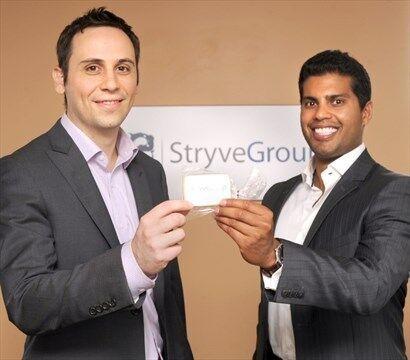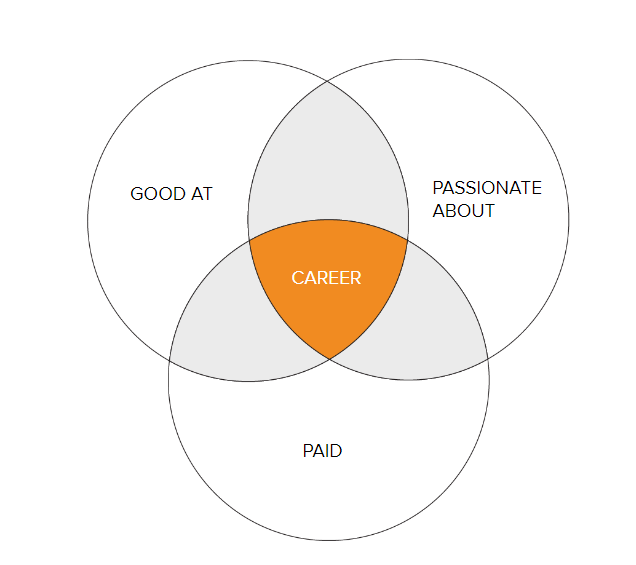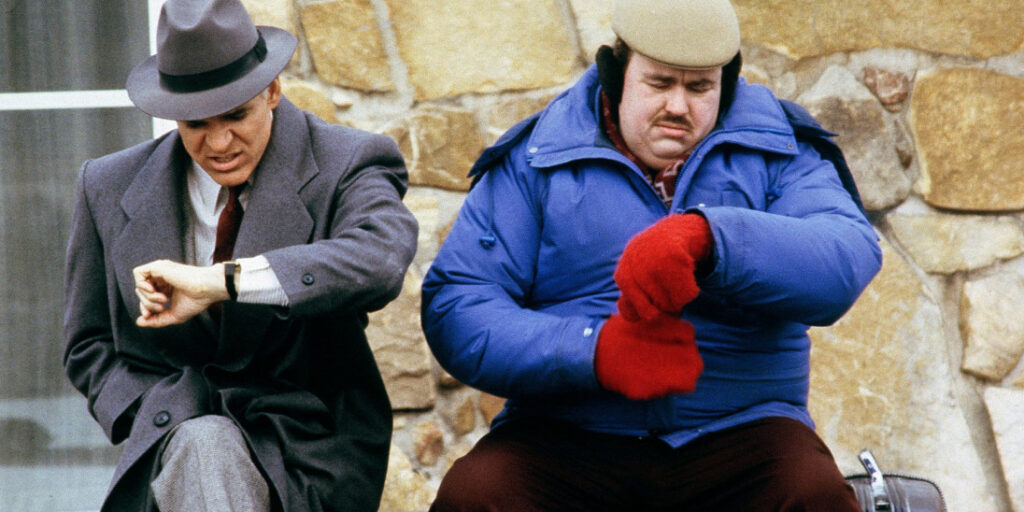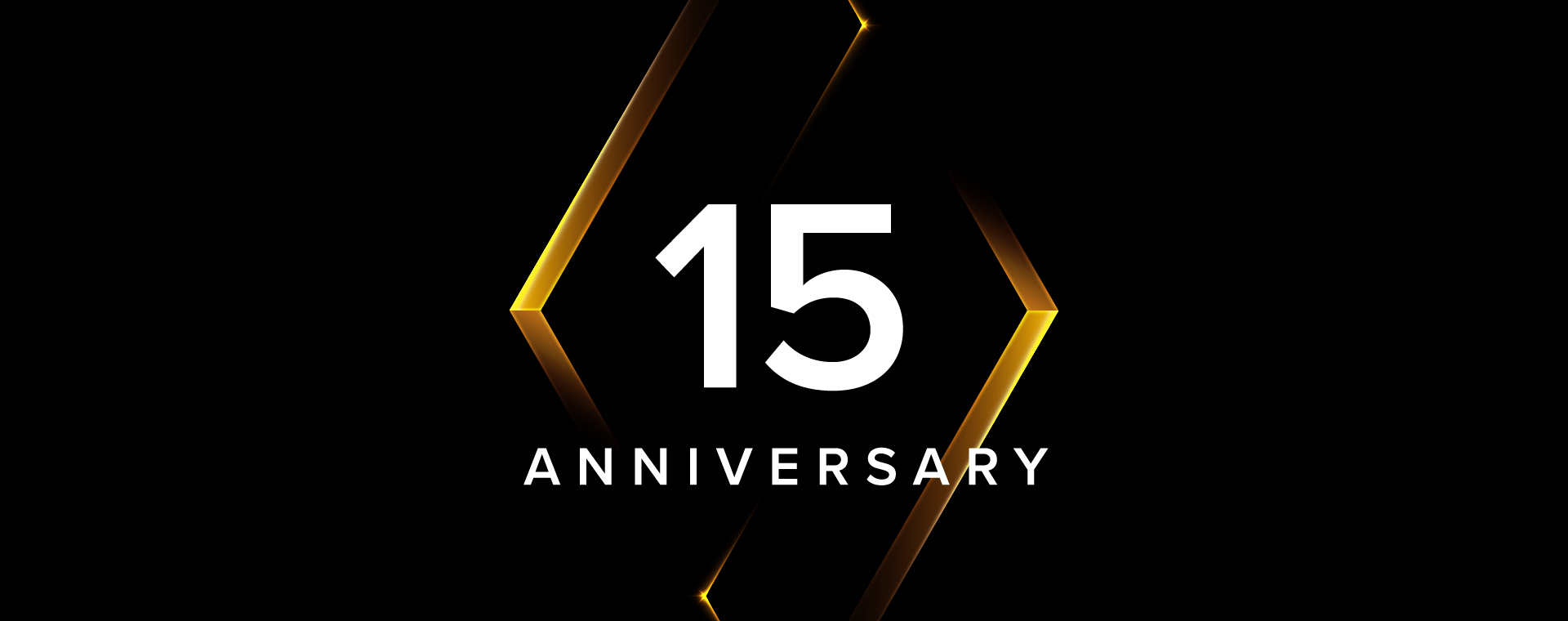My business partner, Ryan, and I started Stryve back in 2008. Believe it or not, this November marks our agency’s 15th anniversary! Here are 15 lessons I’ve learned as a business owner since we started the company. For anyone navigating their career or entrepreneurship, hope these are helpful to you.

1. Your success is your own responsibility
In one of my first jobs out of university, I had a hard-nose type-A boss. I had trouble in that job because the projects we worked on felt very ambiguous and unstructured. I was often left trying to figure out things on my own. I voiced my frustration to my boss, and he responded to me by telling me “My success is my own responsibility”. At the time I didn’t feel like that was helpful. However, as I progressed in my career, I came to understand what he was trying to convey. Even if I’m in a less-than-ideal situation, it’s up to me to do everything I can to make it as successful as I can. If I approach difficult situations this way, I’m more likely to get help from others. This life lesson shifted my mindset from thinking about what others can do to improve my situation to what’s under my control to improve my situation, and it’s helped me tremendously in my career.
2. Success is not linear
When I was in university, I remember the career department posted the starting salaries of each type of job you could get coming out of school. Accounting was paid the highest. I liked the idea of making the most money I could, so, boom, I wanted to be an accountant. Then I got my first job in accounting. While I loved working with numbers, I learned that public accounting wasn’t for me. After that, I went into marketing and landed a great job at a large company well-known for its marketing. I learned after a year working there, that working for a large company wasn’t a fit for me and I quit that job as well. After these two experiences, I had a ‘quarter-life crisis’ because I felt lost and didn’t know what I wanted to do for my career. I’d started my career at two great companies in two great jobs, but it didn’t feel right to me for some reason. I felt like other people in my position would have been thrilled.
In this transition time in my life, I spent a lot of time getting advice from other people, reading books, and thinking about how to find a good career fit. The best advice I received was that success is finding the intersection between what you love, what you’re passionate about, and what you’re good at.

I also learned that success isn’t linear. There were times in my career I felt I was moving forward and other times I felt I was moving backward. Whether I felt like something was a step forward or a step back, I tried to learn something from it. It’s natural to compare yourself to others during your career path and feel like you should be doing what they are doing. However, if think about what you love, and what you’re good at and then figure out how to get paid for it, your success path will be defined on your own terms.

3. What’s the worst thing that can happen? Will you die? Probably not.
When we started Stryve, we didn’t borrow any money to start the business or have any big sunk costs to cover. We often said to ourselves “Well, what’s the worst thing that can happen if we can’t get the business off the ground?”. The answer was “We won’t die”. Rather, we will have learned something in the process and in the worst-case scenario just re-enter the workforce again and get jobs.
Entrepreneurship requires risk-taking of course but starting Stryve was a pretty low risk. We had a lot of gain but little to lose. Having said that, I don’t want to paint a perfectly rosy picture here. We made sacrifices in order to keep our risks low. We worked a number of months without paying ourselves a salary and relied on our small savings to cover life expenses at that time. We lived frugally by not eating out, driving our old rusty cars, and delaying vacations for years. While these sacrifices were difficult, my business partner and I felt that it was worth it. We knew that building a business was important to us and we were willing to make the tradeoff.
My business partner and I have often applied this same approach throughout our careers. What’s the worst thing that can happen if I pick up the phone and call someone to pitch them on working with Stryve? What’s the worst thing that can happen if we test out a new piece of software for our business? Will we die (or go into massive debt)? Probably not. So, give it a shot.
4. Be curious
Throughout my career I’ve noticed a common trait among successful people I’ve looked up to; they remain curious throughout their life. They want to learn about new things, and they ask questions. They never stop being a student.
We saw this firsthand from our friend and mentor, David Chilton. David’s a very successful entrepreneur and he’s one of the most curious people we know. He’s an avid reader of business books and in conversations, he asks great questions.
After seeing the curiosity trait among other successful business people, I’m convinced that curiosity and success in life go hand in hand.
Over the years, the curiosity trait has been woven into our company culture as well. Each person on our team is given an Education Fund of $1000 a year to spend on books, courses, and conferences to acquire new skills or knowledge. Content creation on our blog and internal forums like Slack, Miro and SharePoint encourage our team to learn about new trends or document a ‘how-to’ and share what they’ve learned with others. Instead of the generic Holiday gift basket, each year we send our clients and partners our Book of the Year as a holiday gift in December.
Fostering a culture of learning and curiosity has contributed to our company’s success. Our client retention has remained strong since they appreciate that we’re on top of trends and can help them implement what’s new in marketing and design into their marketing programs. Our employee retention has remained high over the years as well since our employees appreciate that Stryve is a place where they can learn and grow.
5. Build something bigger than yourself
When we started Stryve, much like a lot of start-up entrepreneurs, we focused on ‘making it’, being all hands on deck, and doing whatever it took to establish Stryve. Even after being in business for 15 years, my business partner and I still sometimes feel like we’re a couple of scrappy entrepreneurs who need to be involved in most aspects of the business. We have a fear of becoming obsolete, maybe. Having said that, we have to remind ourselves to delegate, mentor, and create systems and processes for our team to follow so that Stryve can exist one day without us. If we don’t do this, at the end of our careers, we will not have created a business, we only will have created a job for ourselves. We had to learn to let go of our business baby.
Business owners, stop helicopter parenting your ‘business baby’
6. Hire for culture fit and competence
Over the years I’ve noticed that hiring successful team members has come down to two traits: cultural fit and competency. There are lots of ways to get a sense of culture fit. One way to do it is using the ‘LAX Rule’.

It goes something like this, if you were stuck at LAX airport for 6 hours due to a flight delay with someone, would that time go by easily or would it be filled with dead air and awkwardness? If you could imagine the time during a flight delay going relatively easily, then that’s a good sign someone is a good cultural fit for your company.
Competence is more straightforward and comes down to whether a potential hire has the technical skills and acumen to do the job you’re considering them for.
7. It’s never as good as you think or as bad as you think
In the spring of 2020 at the start of the pandemic, much like many other businesses, our business experienced a large and swift downswing in revenue. Within weeks, clients who committed to six-figure projects with us cancelled them.
For the first time ever in my career, I had a panic attack. My mind raced, I couldn’t breathe and felt faint. I thought about all the years of hard work we put into the business, and in that moment, it felt like it was all being wiped away. I thought about our employees, our families and not being able to cover life expenses. In the 15 years of running the business, it was the worst feeling I had ever experienced.
Thankfully, I talked to my wife and told her how I was feeling. She acknowledged the situation looked bad, but then asked me about the probability of all our clients cancelling their projects all at once. She got me to take a deep breath and think about the situation logically. I started to feel better about the situation when I talked to our leadership team and customers about their projects with us and made a spreadsheet for myself tracking their ‘probability of cancelling their contract’ as high, medium, or low. This allowed me to step back and see the big picture.
From this, I learned that things aren’t as bad as we think. When things are seemingly bad, it’s best to break the next steps down into manageable tasks, collect info, see the whole picture, and then make a move from there.
On the flip side, when things have been really good in our business and profitability is high, we’ve been careful to make sure we have about 4-6 months of runway saved in case something unexpected happens.
8. Everyone needs to pull on the same rope in the same direction
As business revenue and profit grew so did our opportunities to explore different lines of business and other avenues outside of our core business. As we explored these opportunities, we forgot to set clear goals and company strategy for our team.
Simply put, we weren’t all pulling on the same rope in the same direction. When we lacked clear company goals and strategy it led to confusion among team members, causing them to feel burned out or frustrated. This translated to the weakest annual financial performance we’ve ever had.
To correct this, the management team at Stryve came together, talked about our company’s strengths, weaknesses, opportunities, and threats, then set company goals and made workback plans from there to achieve those goals. This kicked off the creation of our capabilities deck which has become a guiding framework for our business.
As a result of being more focused, our finances turned around and as a result, employee engagement went up. In a nutshell, we were finally all pulling on the same rope and in the same direction.
9. Be community-oriented
At Stryve we feel that strong communities make strong businesses and vice versa. Businesses are a part of an ecosystem so we should find ways to give back.
One of the Functional Areas at Stryve is Community Building. Each Stryve team member is given 16 hours of paid time off to volunteer and $250 to donate to a non-profit of their choice each year. My business partner and I both volunteer on the boards of directors of non-profit organizations as well.
We also instituted an Equality Action Plan at Stryve to better understand Diversity, Inclusion, and Equity issues occurring in our community and beyond.
(Although you shouldn’t) if you need a return-on-investment reason to be community-oriented, it has led to tangible business results for us. We’ve landed high-quality clients and hired high-value employees because they wanted to work with a company that is community-oriented.
10. Create a psychologically safe environment
The key to a strong organization is that we all feel psychologically safe to speak honestly with each other. At Stryve we’ve set a handful of intentions to create a psychologically safe work environment and you can read more about it on our content hub.
On a personal level, I had to work on psychological safety. In the early days of our company, I received upward feedback from my team that it was difficult to have tough conversations with me. The team would be worried about how I would react. After I received this feedback, I leaned into changing my behavior in order to help others feel psychologically safe with me. Each year my business partner and I are given scores regarding how safe our team feels to have tough conversations with us. I’m happy to report those scores are getting better. Creating a psychologically safe work environment has led to better employee retention and higher job satisfaction scores for us as well.
11. Set and manage expectations
As my role in Stryve has evolved from one of the ‘doers’ to one of the managers I feel that the role of a good manager is to set and manage expectations.
For example, we’ve found that the Statement of Work we create for a client at the beginning of a contract has become more and more important as our organization has grown in headcount and hierarchy. The Statement of Work is the single place where roles, responsibilities, deliverables, and timelines are clearly spelled out so that expectations for our company’s team and client are set properly.
I feel that much of business management can be distilled into setting a plan, being clear on what’s expected, and then making sure the expectations are met.
12. Lean into responsibility acceptance
When something goes wrong, I found it disarms the situation by first saying what you could have done differently.
When I was younger, I felt a strong leader shouldn’t show weakness. Unfortunately, that translated to avoiding admitting mistakes in front of the team. I eventually learned that it’s better to be the first to admit to mistakes, take responsibility, and then tell your team what is being done to fix the situation. This shows your team that it’s okay to use mistakes as opportunities for personal improvement.
On a company-wide level, we use HR software such as Lattice which enables Stryve team members to give each other constructive feedback or praise. Lattice has formalized ‘responsibility acceptance’ for us, and using software like this has helped embed personal improvement into our company culture.
13. The only constant is change
Our business has had its share of setbacks, but we’ve also been fortunate enough to experience extended winning streaks as well. In those times, I feel that we’ve been lulled into thinking that the winning streak is our new normal. For example, in the first 13 years of our company, we only had 1 or 2 people leave our team, ever. This lulled us into thinking that when people get hired at Stryve, they usually want to stay for a long time. In 2022, we had 3 people leave our team in a matter of months. We didn’t see the ‘great resignation’ coming and this forced a major adjustment in our business.
We realized we weren’t doing regular company and team performance check-ins. We were thinking “If it ain’t broke, don’t fix it” as opposed to “the only constant is change, so let’s plan for it”. Now, we have a monthly company performance meeting where we intentionally track, monitor, and discuss the key performance indicators. It’s helped our business tremendously.
14. Seek first to understand, then to be understood
One of my favourite books is Stephen Covey’s 7 Habits of Highly Effective People. In the book, his fifth habit is ‘seek first to understand, then to be understood’.
When you encounter a difficult situation or a conflict, it’s best to ask questions first rather than making assumptions. Once you’ve done this, you should echo back to the person you’re having a disagreement with the sentence “If I understand you correctly, this is your point of view or feelings on this situation…”. This will make the other person feel heard and will make them more open to hearing your side of the story.
15. Sharpen your saw
Another great piece of advice from Stephen Covey’s 7 Habits of Highly Effective People is to Sharpen the Saw. In Covey’s book, he starts the Sharpen the Saw chapter with the following story:
Suppose you were to come upon someone in the woods working feverishly to saw down a tree.
“What are you doing?” you ask.
“Can’t you see?” comes the impatient reply. “I’m sawing down this tree.”
“You look exhausted!” you exclaim. “How long have you been at it?”
“Over five hours,” he returns, “and I’m beat! This is hard work.”
“Well, why don’t you take a break for a few minutes and sharpen that saw?” you inquire. “I’m sure it would go a lot faster.”
“I don’t have time to sharpen the saw,” the man says emphatically. “I’m too busy sawing!”
This story demonstrates that we all need to make sure we’re doing things in our life to recharge our batteries or “sharpen our saw”. We need breaks from our work, to get sleep, to exercise, to spend time with family and friends, to get outside, and pursue hobbies and non-work interests. These things sharpen our saw and will make us more effective at work.
Borrow from our treasury of wisdom
Looking back at being in business for 15 years, it feels like it’s gone by in the blink of an eye. I’m looking forward to the years to come. Whether you’re an aspiring entrepreneur or navigating your career, I hope these insights will be your guiding stars on your journey. Stay curious, stay adaptable, and never stop learning—because, in the end, the journey is the true reward.









